FEATURE Mauritius oil clean-up team turns focus from sea to mangroves

MAURITIUS – A Japanese disaster relief team helping to clean up a devastating oil spill off the Indian Ocean island nation of Mauritius is focusing on mangroves, beaches and wetlands after most of the oil at sea had been collected, it said. A Japanese bulk carrier struck a coral reef on July 25, spilling about 1,000 tonnes of fuel oil in what environmentalists say is the country’s worst ecological disaster, killing wildlife and damaging pristine waters. “As most of the spilled oil at sea has been collected, we are moving into a next stage, with the focus on cleaning up the seaside and minimising the environmental impact,” Keiji Takechi, deputy team leader, told an online news conference from Mahebourg, Mauritius. “Environmental experts who can give advice and instruction are needed now.” Japan sent six officials, mainly oil spill experts, to Mauritius last week and plans to send another team of environment ministry officials and specialists this week. Team leader Junji Gomakubo said the focus was not only on the immediate impact. “We also need to think about plans to restore the environment in the long run, like in a 10-, 20-, 30-year span,” he said. The full impact of the spill is still unfolding, scientists say. As island residents scrambled to mop up the oil slicks and clumps, they saw dead eels and fish floating in the water, as fuel-soaked seabirds limped ashore. READ MORE GLOBAL Why one-size-fits-all conservation won’t work for mangroves

GLOBAL – Mangrove forests play a key role in maintaining healthy ecosystems. Living on the boundary between land and sea, these unique habitats support biodiversity, improve water quality and protect shorelines from flooding and erosion. They are also powerful carbon sinks, storing up to four times more carbon than rainforests. Despite their importance, mangroves are disappearing at an alarming rate. Since 1996, more than 6% of the world’s mangroves have been cleared to make room for agriculture, aquaculture and coastal infrastructure such as roads and ports. To slow the destruction, the United Nations launched the Decade on Ecosystem Restoration in 2020, which focuses on rebuilding mangroves and other habitats to improve biodiversity and mitigate the effects of climate change. But even as the plight of mangroves gains international attention, little is known about the factors that drive land-clearing in the first place. A new study investigating these factors finds that mangrove loss rate varies widely by country and is influenced by how well each nation regulates its environment. Though the findings may seem intuitive, they emphasise the importance of improving government regulation rather than blaming local communities for mangrove destruction. READ MORE AFRICA A Major Oil Pipeline Project Strikes Deep at the Heart of Africa
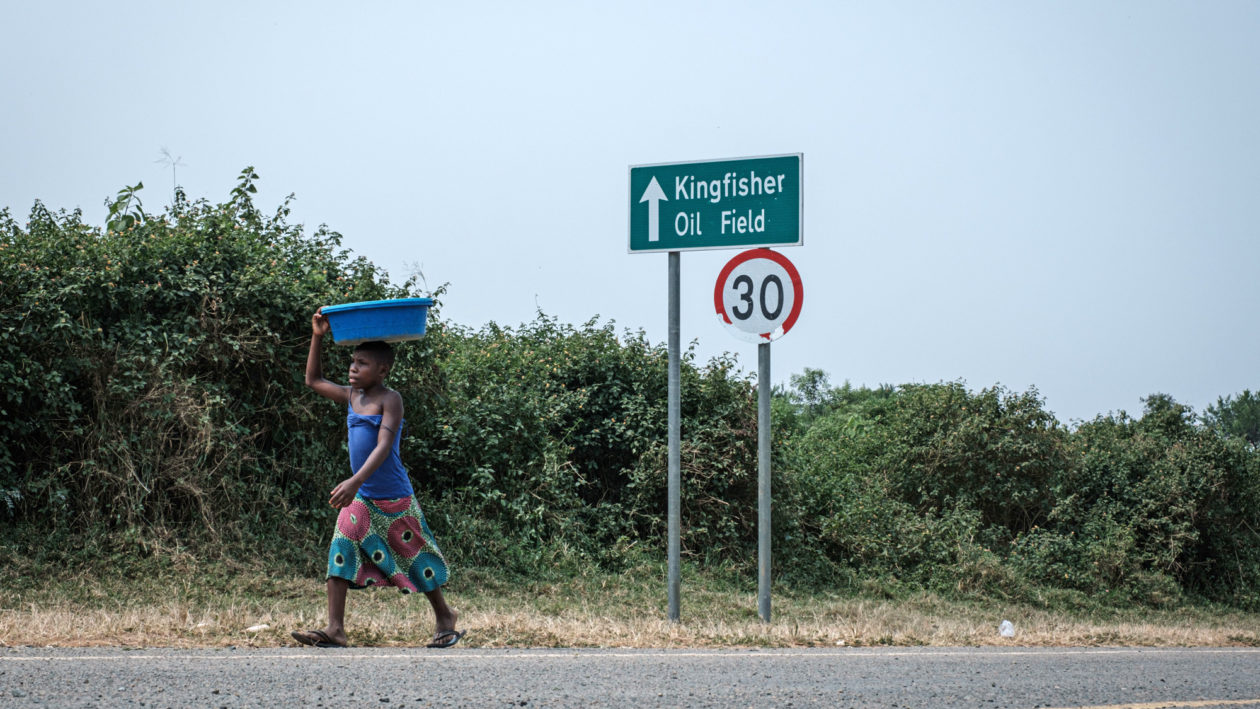
UGANDA – Imagine a tropical version of the Alaskan oil pipeline. Only longer. And passing through critical elephant, lion, and chimpanzee habitats and 12 forest reserves, skirting Africa’s largest lake, and crossing more than 200 rivers and thousands of farms before reaching the Indian Ocean — where its version of the Exxon Valdez disaster would pour crude oil into some of Africa’s most biodiverse mangroves and coral reefs. Such a project is ready for construction, to bring to the world oil from new oil fields in the heart of Africa. It is the East African Crude Oil Pipeline. The middle of a global pandemic, during which oil demand is in freefall and prices at rock bottom, might seem an odd moment to boost the world’s oil production. But the petrochemicals industry is always looking for new reserves to replace those being exhausted. And two oil fields discovered on the shores of Lake Albert, which straddles the border between Uganda and the Democratic Republic of the Congo, are currently among the biggest and cheapest new reserves available. They contain an estimated 6 billion barrels, roughly half the size of Alaska’s Prudhoe Bay field. Construction work has begun at the Kingfisher and Tilenga oil fields, where the China National Offshore Oil Corporation and French giant Total intend to sink 500 wells. They have already spent an estimated $4 billion on infrastructure, and made enemies among local communities by grabbing land and providing paltry compensation. READ MORE Oil drilling in the heart of a Ugandan natural park
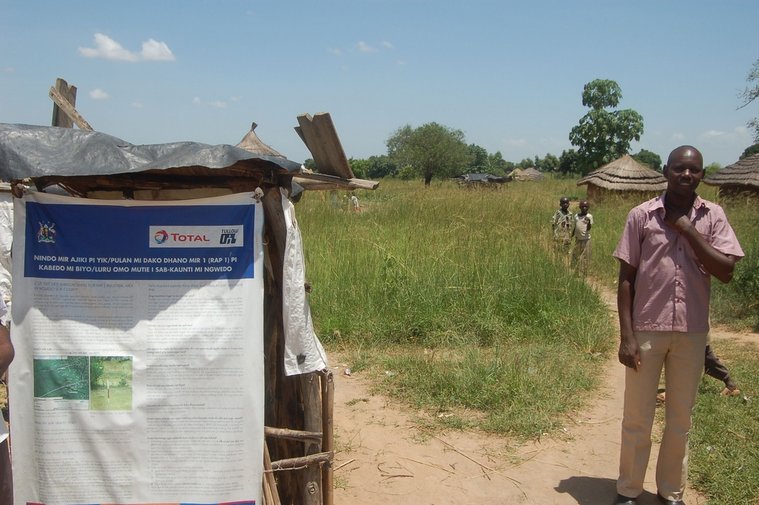
UGANDA – In the collective imagination, the great plains of the East African savannah evoke giraffes and lions, with a sunset behind Kilimanjaro. But no luck for the few remaining individuals of these endangered species, nor for the hundreds of thousands of people who live from breeding, agriculture and fishing from Uganda to the Indian Ocean, these territories also evoke to some investors still untapped oil reserves – not least for economic reasons, until now. This is the case of the shareholders of the Total group which, via a Ugandan subsidiary (100% owned), has positioned itself within a mega-oil project on the edge of Lake Albert. Total is in fact the operator and principal investor of the “Tilenga” project, which aims to exploit six oil fields, alongside the Chinese multinationals CNOOC and the British Tullow. Total holds three of the four licenses issued by the Ugandan government to carry out exploration and production activities in the area. The firm plans to drill 419 wells spread over 34 platforms, primarily within the Murchison Falls Protected Natural Area, to achieve production of around 200,000 barrels per day, more than Gabon’s current production. The project includes associated infrastructure, such as the construction of an industrial zone with an oil processing plant in Buliisa, a village near the park, as well as an oil pipeline to transport this oil to a local refinery, in the neighboring district. READ MORE Kenyan authorities burn down 28 homes belonging to indigenous Sengwer community in Embobut Forest
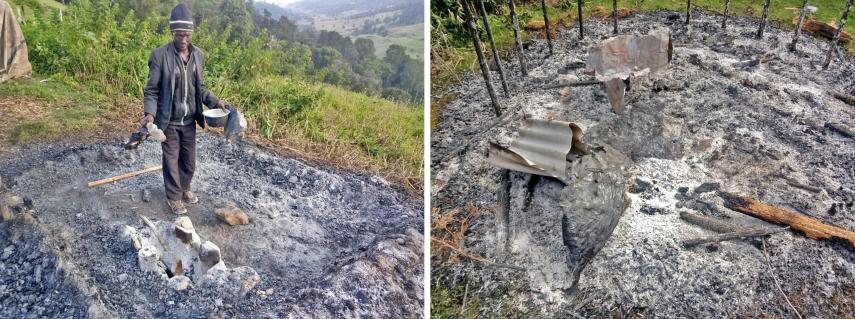
KENYA – Kenyan authorities have burned down 28 homes belonging to the indigenous Sengwer community in the Embobut Forest in Western Kenya. “What is happening now is so dangerous, especially during this COVID-19 pandemic,” said Elias Kimaiyo, a Sengwer community leader in Embobut. Many community members had left the area in search of food when the raid took place, meaning they were unable to salvage their bedding and other possessions; the children who had remained at home fled into the nearby forest where they watched their homes burn. The attack in Kapkok Glade of Embobut Forest, which took place on 10 July, has left dozens of people in the cold, with no shelter, and particularly vulnerable to the spread of coronavirus. It is the latest in a series of attempts to evict the Sengwer from their traditional lands, a situation which has escalated despite the establishment of the EU-funded Water Towers Protection and Climate Change Mitigation and Adaptation Programme (WaTER). The programme, which began in 2017, was intended to improve the ecosystems of Kenya’s principal water towers while benefitting the nearby communities, yet since its inception there has been a dramatic increase in the number of forced evictions, attacks and shootings of the Sengwer. In January 2018 the EU suspended the funding of the programme when a Sengwer man, Robert Kirotich, was shot dead by Kenya Forest Service (KFS) guards while taking care of his cattle in the forest, and another man was seriously injured.Forced evictions are prohibited by the Kenya Constitution and the Land Act 2012. In May of this year the government declared a moratorium on evictions for the period of COVID-19 pandemic following calls by UN Special Rapporteurs, yet these bans have been roundly ignored by KFS. READ MORE AMERICAS Venezuela coast could take half a century to recover from oil spill, researcher says
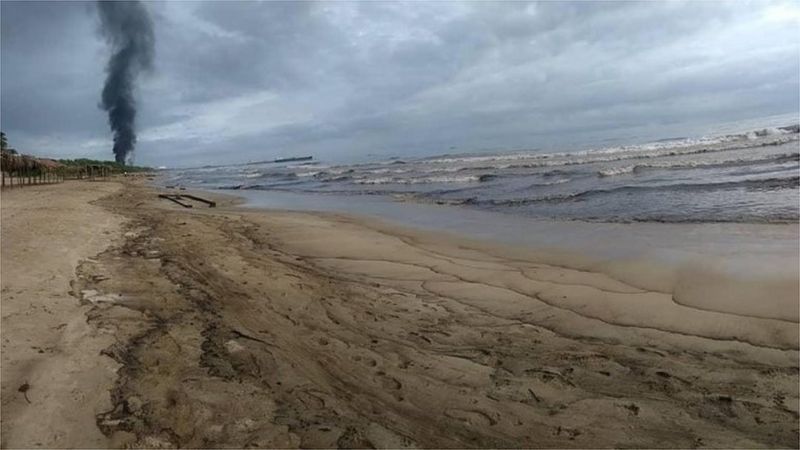
VENEZUELA – A strip of Venezuela’s western coastline boasting pristine beaches and fragile ecosystems like mangroves and coral reefs could take more than half a century to fully recover from the environmental impacts of a recent oil spill, a researcher said on Wednesday. The country’s opposition-controlled National Assembly last week opened an investigation to determine the causes and consequences of the oil slicks that began washing up on the Caribbean coast of western Falcon state in early August.“We project that the negative consequences on ecosystems and their components could last for 50 years or more,” Julia Alvarez, a biologist with Venezuela’s SVE ecological society, told reporters. Alvarez added that the area was also home to mollusks that likely would have died instantly on contact with the oil, threatening the livelihood of fishermen in the area at a time of severe economic contraction in Venezuela.Independent researchers and opposition lawmakers have said the spill likely originated from the El Palito oil refinery in nearby Carabobo state, citing satellite images showing slicks near the refinery in late July, days before oil began washing up on the coasts of Morrocoy national park. A report published by the SVE and Venezuela’s Simon Bolivar University cited satellite images showing that the slick first appeared on July 22 near the refinery. Given its length of 5.6 km (3.5 miles) and width of 1.5 km, the researchers calculated it contained around 26,700 barrels of oil. READ MORE Protecting Mangroves in Panama to Create a Better Climate Future

PANAMA – Located on the narrow isthmus between North and South America, Panama offers some of the most important stopover and wintering habitat for migrant shorebird species in the Americas. Each year, between 1 to 2 million shorebirds use Panama’s coastal wetlands, encompassing mangrove forests, mudflats, estuaries, and freshwater marshes. In particular, there are 120 neotropical migrants known to use the Bay of Panama wetlands, including the Western Sandpiper, Whimbrel, Black-bellied Plover, and Willet. As migratory shorebirds make their epic treks across the globe, they depend on healthy wetland habitat to rest and feed; however, wetlands worldwide are being lost at alarming rates to development and degradation. As their habitat is lost, shorebird populations are similarly affected with approximately 45% of Arctic-breeding shorebird populations showing declines. Panama’s mangroves provide important ecosystem services for birds and people alike. READ MORE Five new species of fungi discovered in Cozumel mangroves

MEXICO – They found 5 new species of hongos (spanish for mushrooms), the results will allow the authorities to issue guidelines or take actions aimed at the conservation of this habitat. Environmental care is a crucial action to ensure the permanence of humans on the planet. The General Director of the IPN, Mario Alberto Rodríguez Casas, has stressed that the conservation and care of natural resources is a priority for the Politechnic On explorations of mangroves of Cozumel, Quintana Roo, scientists from the National Polytechnic Institute (IPN) discovered five new species of fungi, three are endemic (Hypoxylon cozumelensis, Marthamyces manglicola and Rhytidhysteron cozumelensis), which expands information on this ecosystem to preserve its biota, in addition to its antibiotic and antibacterial properties. The Secretary of Public Education, Esteban Moctezuma Barragán, has pointed out that the care of the environment is a crucial action to ensure the permanence of humans on the planet. READ MORE ASIA EDITOR’S NOTE – This article is from a few months back in (Thailand’s) The Nation newspaper. The annual mangrove loss is 40,000 to 50,000 rai or 6,400 to 8,000ha. The fact that now Thai mangrove loss = gain is not ideal because i.e. in Krabi 8ha of 20-30 year old mangrove were cleared & filled several years ago to build a sports stadium. Last year a new boat pier & tourist facilities in Krabi for boats to Koh Yao Noi & Yai had been completely built in mangrove forests. A new tourist pier in Trang at Pak Meng has also meant mangrove loss.
Thai mangrove forestation ‘stable’ after years of decline

THAILAND – A Thai mangrove forest has been stabilised for several years, Thon Thamrongnawasawat, well-known ecologist, posted on his Facebook page to celebrate the National Mangrove Forest Day. The mangrove forest had covered 2 million rai (320,000 hectares) 40 years ago, he said. Deforestation and shrimp farming have contributed to the decline of the mangrove coverage area to 1.5 million rai today, he lamented. However, the good news is that the mangrove tree area has been stabilised for past several years, he said. Overall, deforestation of mangrove in Thailand was about 40,000 to 50,000 rai on average, the same rate as reclamation of those deforested areas. The largest mangrove forests are in Phang-nga, Ranong. On the Siam Gulf, large mangrove forests are in Chanthaburi, Trat and Surat Thani, and Bangkok also has about 4,000 rai of mangrove trees, he said. People catch 90 types of aqua animals from a mangrove forest and the value of fish, crab, shrimps being harvested by people per one rai of mangrove tree is estimated to be worth about Bt5,000 a year, he said. READ MORE An unheard appeal to the President
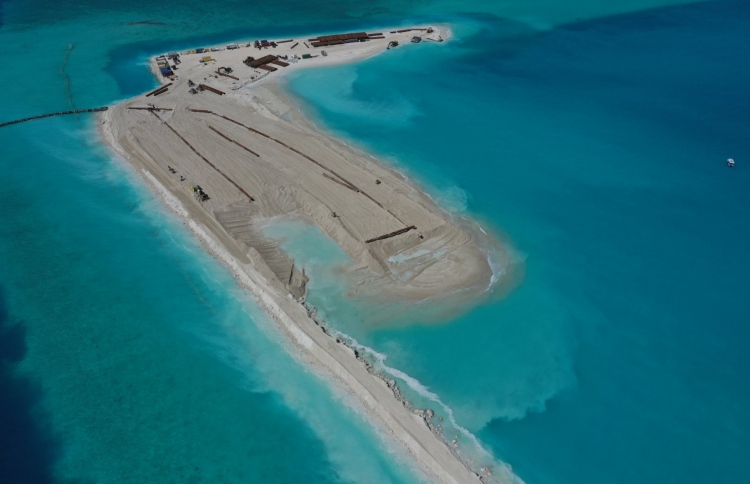
MALDIVES – A member of the public wrote a letter addressed to President Ibrahim Mohamed Solih, on January 2020, urging the leader to take heed of the environmental crisis being faced by the people of Maldives and follow through on the ruling party’s pledges to take immediate, meaningful action. To this day, over six months have passed since the island nation’s parliament proclaimed it to be undergoing a state of climate emergency on February 13, prompting an individual to publicize the direct appeal written to President Ibrahim Mohamed Solih, along with the listed concerns. Even to the casual onlooker, this first-of-its-kind declaration by the island nation seems ‘all bark and no bite’ as Maldives’ continues to invest in environmentally destructive megaprojects, often involving mass land reclamation and coast modification. Speaking to The Edition, author of the aforementioned letter and long-time environment advocate Humaida Abdula Ghafoor offered the following explanation for the citizen’s appeal. “It is not everyday one has to write to the President” The English translation of the letter reads as follows: READ MORE Vigils in London mark 14th anniversary of Phulbari Massacre

BANGLADESH – This 26th August marks the 14th anniversary of the Phulbari Day shooting. On 26 August in 2006 three young people Al Amin (11 yo), Mohammad Salekin (13 yo), and Tarikul Islam (18 yo) were shot dead, and more than two hundreds injured in a non-violent demonstration of 80,000 people who marched against a London-listed mining company, GCM Resources Plc., in Phulbari. GCM want to build a massive open cast coal mine by forcibly displacing 130,000 people in Phulbari, the only flood protected location in northwest Bangladesh. The day has been marked as Phulbari Day since the murders of Al Amin, Salekin and Tarikul. Powerful resistance by women, children, indigenous men, farmers and teachers against the mining company has in the aftermath of the shooting put a decade long halt to the coal project. The Bangladesh government has declined all contracts with GCM. But the company continues its dodgy deals. GCM announced extensions to strategic partnership talks for the Phulbari coal project in Bangladesh, they extended a joint venture agreement with PowerChina and the MoU with NFC by 12 months to January 2021, and recruited a local agency called the DG Infratech Pte Ltd, a Bangladesh company to lobby with the government and to get their dodgy deal through. Despite having no valid contract with Bangladesh, they are aggressively moving ahead with their plans. If the mine is built, 130,000 families of farmers in Phulbari would be displaced, 14,600 hectares of highly cultivable land would be destroyed, clean water resources be threatened and one of the world’s largest mangrove forests, the Sunderbans, would be damaged. READ MORE LAST WORD Dear Alfredo, I am sending an article about what is happening with the oil spill in Venezuela, some images related to the biological diversity of the Ramsar 414 “Cuare” site and the “Morrocoy” National Park, I am preparing more information to send and see if there is the possibility of interviews with the BBC, the press in the United States and Europe, it is very serious, a shame that it tries to minimize the impacts. I think it is time for mangrove experts and activists to speak out strongly. I have copied this email to the Venezuelan journalist Lisbeth Barboza, she is a person very committed to the environment and who developed a responsible journalism in the country, she also wanted you and Yara to give their opinion on what is happening, especially from a point of view view more International and focused on what we can do now to remedy the problem and prevent other oil spills. if she writes for you or Yara grateful for your opinions and contributions. IF the article is published in MAP News in English, please inform us to spread it on our social networks and digital platforms. Thank you Henderson Colina
Asociación Ecologista para la Preservación Ambiental
Estado Falcón – Venezuela
Like this newsletter?
Pease consider donating to MAP to keep it going.
Giving could never be easier | Stop the destruction of Can Gio Mangrove Biosphere Reserve
SIGN PETITION (Scroll down in link for English version) 2021
CHILDREN’S ART CALENDAR
ENTRIES DEADLINE EXTENDED TO SEPT 15!  ACTION ALERTS Please SIGN: keep plantations out of orangutan habitat!
TAKE ACTION Unilever: stop destroying mangroves for convenience food! SIGN OUR PETITION Stop plundering the oceans for industrial aquaculture! SIGN THE PETITION Take action now and stop the build-out of coal plants in Bangladesh. Save Kakinada mangrove forest – Sign the Petition Like this newsletter? Pease consider donating to MAP to keep it going. Giving could never be easier 
CBEMR Training in Tanzania: Ground-breaking training breathes life into mangrove ecosystem restoration – The Mangrove Alliance Please see our newest video: ” Restoring The Natural Mangrove Forest” – https://youtu.be/Vh7CoPBLQa8 Mangrove Restoration Map VIEW MAP HERE 
Restoring The Natural Mangrove Forest
Watch movie 
Community Based Ecological Mangrove Restoration in Rufiji Delta VIEW VIDEO Video: Mangroves for the Future – A look bacK. As the latest phase of Mangroves for the Future (MFF) draws to a close, this video highlights some of the project’s most successful initiatives – from local women supporting national park management in Viet Nam to an island in the Maldives that has become a model for waste management, and everything in between. View Here WANT TO GET INVOLVED?
Follow and Join MAP!    
Like this newsletter? Pease consider donating to MAP to keep it going. Giving could never be easier 

Singing for the Sundarbans WATCH HERE Entrevista con Monica Quarto del Mangrove Action Project (Spanish language) Oye Aqui
VOLUNTEER OPPORTUNITY 
MANGROVE ISSUES Want to learn more about mangroves?
Our short presentation will give you a better understanding of the issues we are working to solve. WATCH PRESENTATION What is CBEMR? Download MAP’s 2 page CBEMR Information Sheet containing links to all MAP’s CBEMR resources – CLICK HERE What is EPIC? – The Ecosystems Protecting Infrastructure and Communities (EPIC) project: the role of ecosystems as protective barriers against climate induced hazards MANGROVES APP AVAILABLE
A pictorial field guide for easy identification of various mangrove species and learning about the mangroves ecosystem. CLICK HERE View MAP’s uploaded Videos at MAPmangrover’sChannel
Question Your Shrimp Consumer/Markets Campaign!
WATCH VIDEO WATCH – Mangroves: how they help the ocean
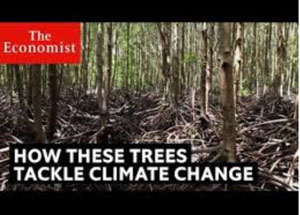 Mangrove Restoration in Asia – Watch Short Video The Value of Mangrove Forests View Video CBEMR Experience Exchange MAP 2017 English Subtitles
VIEW THE VIDEO Mangroves: Guidebook to Malaysia – Click Here
Mangrove rehabilitation in Asia – Local Action and cross-border Transfer of Knowledge for the Conservation of Climate, Forests and Biodiversity VIEW VIDEOS HERE SHARE MAP’S VISION
CLICK HERE to watch short introductory video. Together we can work “at the roots of the sea”. Our short documentary, Reducing the Risk of Disaster through Nature-Based Solutions : Mangroves

INTERVIEW – Yale Climate Connection interview with MAP’s Alfredo Quarto LISTEN Exclusive Interview with Alfredo Quarto, Co-Founder and Executive Director of Mangrove Action Project – See more
Marvellous Mangroves Curriculum The Marvellous Mangroves Education Forum is an online hub for those utilizing the Marvellous Mangroves (MM) Curriculum. It gives students, teachers and anyone interested in mangroves, the opportunity to learn and share ideas themed around the curriculum, to connect and communicate with others around the globe whilst exploring mangroves from your computer or on the go. VISIT 
The award-winning Marvellous Mangroves (MM) curriculum educates children on the importance of mangroves and their ecological functions, teaching them about modern challenges and mechanisms for sustainability. VIEW VIDEO Marvellous Mangroves Curriculum in Bangladesh – WATCH VIDEO
MARVELLOUS MANGROVES IN BRAZIL
En Portuges 
Marvellous Mangroves – A Curriculum-Based Teachers Guide. FOR MORE ON MAPs AWARD WINNING CHINA MANGROVE CURRICULUM VISIT

VIMEO SHOW
VISIT OUR “MM” WEBPAGE Check out our presentation for more details on Marvellous Mangroves Read this 10 page history of the development of MAP’s educational curriculum VIEW DOCUMENT
Article in Canada’s Green Teacher Magazine – Read More
Like this newsletter? Pease consider donating to MAP to keep it going. Giving could never be easier 
Green Planet Fundraising Assists MAP – LEARN MORE
Volunteer Opportunities with Mangrove Action Project CLICK HERE
“Question Your Shrimp” Campaign Question Your Shrimp- Don’t Buy or Sell Imported Tropical Shrimp! Sign the Petition Learn more about the affects of the shrimp industry on mangroves by visiting our blog
Editor’s Note: Mangrove Action Project’s Executive Director, Alfredo Quarto was interviewed about shrimp by Green Acre Radio’s Martha Baskin
LISTEN TO INTERVIEW Sign the Consumer’s Pledge to avoid imported shrimp
Not yet a MAP News subscriber?
Click here to subscribe. Note to Our Readers: We strive to keep active links in our newsletter. However, due to circumstances beyond our control, occasionally links to stories may become broken. If you find a link to a story is not functioning, please cut and paste the headline into your browser search bar. In most cases you should be able to locate the original story.
|



























